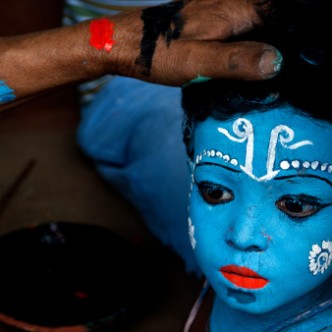
Program
Mysticism in the Christian and Hindu worlds
Between the 11th and the 16th centuries, mysticism followed a parallel development in the Christian, Islamic and Hindu worlds. Everywhere there was a surge of passionate love for the divine. If it had not been included in the Scriptures, the Song of Songs, or Canticle of Canticles, or the Poem of Poems, would be one of the greatest love poems ever written. Amongst the different exegesis, Saint John of the Cross, or Bernard of Clairvaux, see it as an allegory, the union between the soul and its God.
With the Counter-Reformation a number of compositions based on the Song of Songsflourished, and it was the same for Lutheran music, particularly during the 17th century.
Bhakti or devotion is one of the components of Hinduism. Particularly widespread in the cult to Krishna, who is an avatar of the god Vishnu, this type of devotion has given rise to numerous texts that were created to be sung and danced. One of the most famous, written in the 12th century, the Gita Govinda or the Cowherd’s Song recounts the adventures of Krishna and Radha, whose relationship outside the structure of marriage symbolizes the devotees’ love for their God. In the 16th century, it is a woman from Rajasthan, Mirabai, to whom we owe a series of short poems that were orally transmitted throughout India, celebrating a passionate love for Krishna.
Music (and dance) are still associated with these texts and bhajansare sung regularly in a popular form by the Bauls, the ‘madmen of God’, but they are also sung in concert settings, in more learned musical modes.
One singer (male or female) and 4 Indian instrumentalists
tabla, small percussions, sitar ou sarangi, tanpura
One singer (male or female) and 3 European instrumentalists
Theorbo, viola da gamba, harp
Italian and German music, 17th century motets